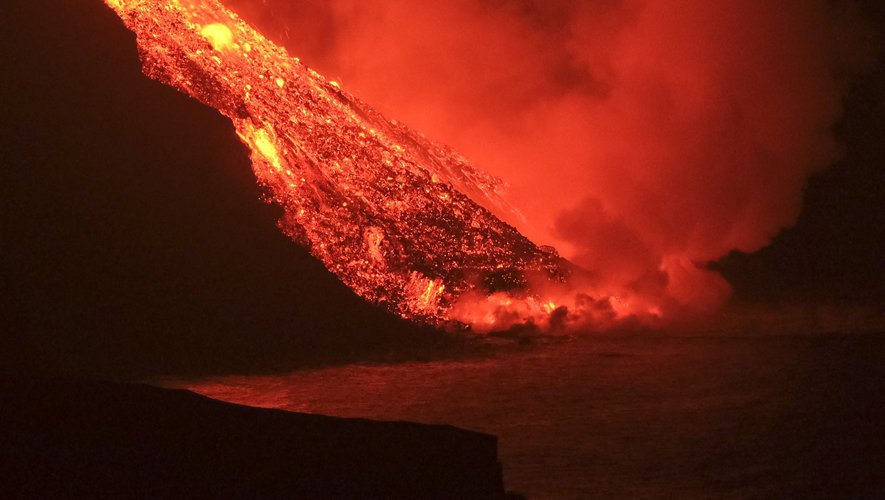
Volcanic eruption in La Palma – 50m pyramid of magma forms in the ocean, great photos of the volcano on Wednesday
Lava from the Cumbre Vieja volcano, on the Canary island of La Palma, reached the sea on the tenth day of the eruption, falling from the cliffs of the coast. Many neighborhoods in the municipality of Tazacorte remain confined due to the potential for lava to come into contact with water to generate harmful gases. The authorities recommended maintaining a distance of at least 3.5 kilometers from the event.
As it falls into the ocean, from Tuesday night to Wednesday, the lava river forms a pyramid of volcanic rock. According to observers, this mountain of magma is surrounded by white clouds containing gases, but it is dwindling rapidly at the moment.
According to scientists, this mountain of magma is fed by a more viscous Hawaiian-type lava source.
The magma that has been escaping since Monday evening is already coming from deeper regions. Not only is the volume of the ejected lava much larger, but above all, this lava is much hotter and moves faster, forming an impressive river. A severe case Wednesday morning is marked by a new phenomenon in which a huge amount of lava flows into the ocean.
Regarding the geophysical consequences of this unprecedented phenomenon, specialists are closely watching the “thermal shock when lava comes into contact with sea water.
Molten igneous rocks are deposited at a temperature of more than 1000 degrees while the ocean temperature is 23 degrees. Hence the formation of water vapor plumes is strongly charged with hydrochloric acid due to the sodium chloride present in sea water.
According to observations, the river of lava falling at the foot of the escarpment comes from the new La Palma volcano. This new hole in activity since Monday is generating an impressive fountain more than 50 meters high. Another main mouth, from the first eruption, now expels more gases than the lava.
The Spanish National Geographic Institute also recorded a 3.3-magnitude earthquake located southwest of Villa de Mazo on the island of La Palma at 11:19 pm on Tuesday, at a depth of 11 kilometers.
The lava has already covered a total of 258 hectares and nearly 600 buildingsAccording to satellite observations of the European Union’s Copernicus programme. On his way to the sea, he destroyed more than 580 buildings, more than 21 kilometers of roads.

“Unapologetic pop culture trailblazer. Freelance troublemaker. Food guru. Alcohol fanatic. Gamer. Explorer. Thinker.”
